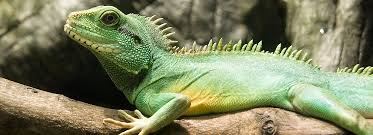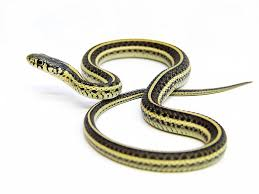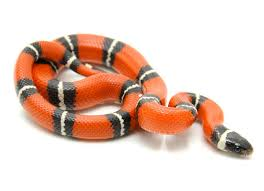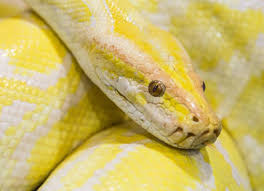Reptiles Breeds
African Rock Python

- Scientific Name : Python Sebae
- Country Of Origin : It has two subspecies; one is found in Central and Western Africa, the other in Southern Africa.
- Popular Varieties : There are two subspecies of African Rock Python (AfRock): the Central African Rock Python (P. s. sebae) and the South African Rock Python (P. s. natalensis). The South African Rock Python was recently
- Size : South African Rock Pythons grow to reach an average 9-11 feet in length for males, and 15 feet in length for females. Central African Rock Pythons, on the other hand, are the third largest species of view more
Ball Python

- Scientific Name : Python Regius
- Popular Varieties : No ball python subspecies are currently recognized, but a variety of ball python colors and patterns can be found from region to region. Breeders are also producing varieties called morphs, but most o
- Size : Ball pythons are fairly short, muscular, heavy-bodied snakes. Compared to other pythons, the ball python doesn’t grow to be very large. Their average length when fully grown is considerable &mda view more
Blue-Tongued Skink

- Scientific Name : Tiliqua
- Popular Varieties : One of the largest of all the lizard families is the Scincidae, or skink family. The most prominent and popular of the pet skinks is the Tiliqua, or blue-tongued skink. There are several differen
- Size : Blue-tongued skinks are rather heavy-bodied, medium-sized lizards with short, stubby tails and legs, and triangular heads. They are slow moving lizards, due to their short and stubby legs, and they do view more
Boa Constrictor

- Popular Varieties : This is one of the few instances where an animal’s scientific name is the same as its common name. There are six subspecies currently recognized by all herpetologists, including the Common Boa C
- Size : Boas are one of the few snakes that produce live births, versus eggs that need to be incubated. Newborn boa constrictors range in length between 14 and 22 inches and weigh just 2 to 3 ounces. The aver view more
Burmese Python

- Scientific Name : Python Bivittatus
- Popular Varieties : Until 2009 the Burmese python was considered one of the two subspecies of the Indian Python, but it now enjoys its own classification. The Burmese python has one subspecies: the Python bivittatus
- Size : Burmese pythons are one of the five largest species of snakes in the world. Hatchling Burmese pythons average a length of 22 inches (56 cm) and a weight of 4 ounces (113 grams). Female Burmese pythons view more
California Kingsnake

- Scientific Name : Lampropeltis Getula Californiae
- Popular Varieties : The California Kingsnake was considered a subspecies of the common Kingsnake until 2009, when it was upgraded to its own species. California Kings have a natural range that spans throughout California
- Size : California Kingsnakes are moderately sized, yet slender, growing to be an average of 4 – 5 feet (1.3 – 15. m) in length. Most California kings will reach adulthood within three to four yea view more
Chinese Water Dragon

- Scientific Name : Physignathus Cocincinus
- Popular Varieties : There are no other recognized subspecies of Chinese Water Dragon, but there are other similar lizard species, the closest genetic relative being the Australian Water Dragon (Physignathus lesueurii).
- Size : Chinese water dragons typically grow to an average length of 3 feet (1m) from nose to tail, with females averaging a little smaller than males at 2 feet (.6m) in length. The water dragon’s tail view more
Corn Snake

- Scientific Name : Pantherophis Guttatus
- Popular Varieties : More corn snakes are bred in captivity each year than any other species of snake on the planet, so it’s no surprise that corn snakes are the most readily available snake specimens on the market
- Size : Today’s corn snakes are descended from stock taken from all over their natural range, so the size of your full-grown pet corn snake will vary depending on its species. Some of the smaller types view more
Garter Snake

- Scientific Name : Thamnophis
- Popular Varieties : Garter snakes make great first snakes for families with elementary school-age children and older, because these snakes are active during the day, do not constrict, and do not get very big. Starting at view more
Green Iguana

- Scientific Name : Iguana Iguana
- Popular Varieties : While there used to be two subspecies of Green Iguana—the Iguana iguana and the Iguana rhinolopha—the only currently recognized species of Green Iguana is the Iguana ig
- Size : There is a great amount of variation in the potential adult size of green iguanas, depending on the country they came from and the conditions in which they were kept. Generally, adult iguanas will ach view more
Inland Bearded Dragon

- Scientific Name : Pogona Vitticeps
- Popular Varieties : The bearded dragon is arguably the most common lizard kept in the pet trade today. Bearded dragon is the common name applied to a few different types of lizards, all in the Pogona family, th
- Size : Inland beardies are usually just under 4 inches in length when born and can grow to a length between 19 and 23 inches, with a weight of at least .75 pounds (250 grams). The exception to this view more
Kingsnake

- Scientific Name : Lampropeltis
- Popular Varieties : Kingsnakes are one of the most popular group of snakes currently kept by herpetoculturists and hobbyists. Many are captive-bred, though some are still collected in some numbers from the wild. There a
- Size : Since the Kingsnake is made up of so many different varieties and subspecies (we’re talking 50+), their sizes when full grown can fluctuate. Some of the smaller species of Kingsnake reach 18 inc view more
Leopard Gecko

- Scientific Name : Eublepharis Macularius
- Popular Varieties : The common leopard gecko has five officially recognized subspecies, not all of which have common names. This is because all of the subspecies existed as one until the 1970s and early 1980s when taxono
- Size : Leopard gecko hatchlings average between 3 and 4 inches in length from the tip of the nose to the end of the tail. Leopard geckos generally tend to be medium-bodied animals, depending on the type, and view more
Milksnake

- Scientific Name : Lampropeltis Triangulum
- Popular Varieties : Milksnakes are a subspecies of the Kingsnake. Legend has it that the snakes would slither into barns at night, curl around the legs of milk cows, and sup on their milk straight from the udder. And so
- Size : Since there are so many different subspecies of Milksnake (50+), the size can very greatly. On average, and species depending, Milksnakes can grow to between 20 and 60 inches (51 to 152 cm) in length, view more
Python

- Scientific Name : Pythonidae
- Popular Varieties : Pythons are a family of giant, nonvenomous constrictors that can be found in Australia, Asia, and Africa. There are currently 8 genera, 26 species, and more than 50 subspecies of Python that have been
- Size : Some of the largest snakes in the world are pythons. The size of a full-grown python can vary greatly according to its species, but to give you an idea of the sheer size of these animals consider this view more
Reticulated Python

- Scientific Name : Python Reticulatus
- Popular Varieties : Reticulated pythons—called “retics” or just “tics” for short—are a subspecies of the Python family and as such don’t have any officially recognized subspecies
- Size : Reticulated pythons fall under the category of “giant snakes” and are among the largest species of python in the world. That being said, they still weigh less than other giant snakes of eq view more
Veiled Chameleon

- Scientific Name : Chamaeleo Calyptratus
- Popular Varieties : Originally, there were two officially recognized subspecies of veiled chameleon, the C. c. calyptratus and the C. c. calcarifer. The main difference between the two is the size of
- Size : How Large Will My Veiled Chameleon Grow? The adult size of your pet veiled chameleon depends on its gender. Typical males grow to a length between 17 and 24 inches (43.2 to 61 cm) from the tip of the view more
